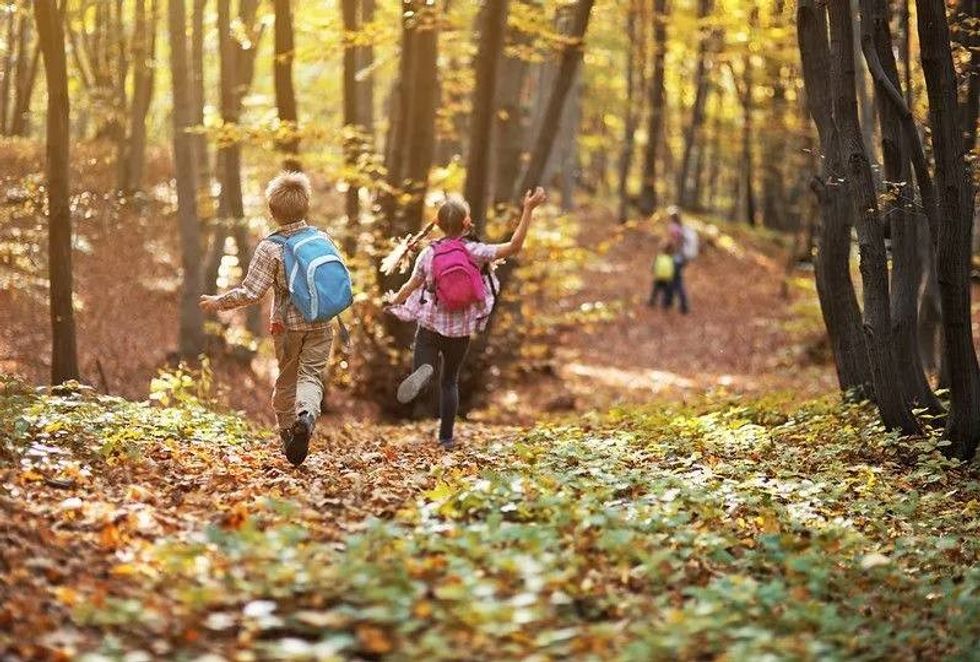So…first things first: what exactly is bushcraft?
Essentially, bushcraft means wilderness living skills. It is the knowledge and skills we have to live, thrive and survive in an outdoor environment.
Let’s face it, the most natural environment we can be in is the outdoors. We are hard-wired to absorb daylight, not blue light. For the last 80,000 years, sitting around a fire, forming a tribe, sharing food, stories and problem solving has been, and still is, our best form of communication.
Time perhaps, to return to basics and practice the collective skills of our ancestors once more.
Forage And Cook: Wild Garlic Bannock Bread

How To Make Bannock Bread
If you’re lucky enough to be walking through a patch of countryside on your daily outing, you will usually smell wild garlic before you see it. Garlic is a fantastic item to forage for and is easily identifiable due to its large leaves and strong smell.
It is also a great way for children to engage all of their senses.
Tip: An indicator of ancient woodland, you can find garlic in shady woods where they grow in abundance in spring. Take from the back of the bunch and only as much as you need.
Of course, there are no measuring jugs or scales in the woodland, so follow my simple recipe to make delicious campfire bannocks.
To make one portion you will need:
A pinch of salt
1 cup of water
2 heaped large spoonfuls of flour
A splash of cooking oil
A mixing bowl
A frying pan
A campfire, BBQ or stove
Method: Mix the salt, flour and chopped garlic in a bowl. Gradually add the water, a splash at a time and mix with your fingers.
Mix until the ingredients stick together and form a dough-like consistency. Flatten like a thick, round pancake. Heat the oil in a pan and cook the bannock bread for around 3-minutes each side, or more if needed.
Make A Fire Without Matches

When we think about fire we often don't think about why there might be a need for it, but actually, fire is essential for our survival. It provides light, warmth, can be a signal for help, can warn-off predators and is an excellent method of cooking.
One of my favourite ways of making fire is using a ‘ferrocerium’ fire striker.
Tip: You can find these strikers in most outdoor shops (online, too!), however I prefer the ones with large grips as they are easier for little hands to learn on, with supervision of course.
You will need:
One ferrocerium fire striker
A small piece of cotton wool
Please note: Adult supervision required. Do not touch the cotton wool whilst alight, or immediately afterwards. Tuck in all loose clothing and tie hair back prior to commencing.
Method: Place the cotton wool on a flat outdoor surface on the floor. A stone or log will suffice.
Ensure there is nothing else on that surface. Gently pull at the wool turning it into a giant fluffy cloud to increase its surface mass and aid in the catching of a spark. Kneel next to the log or stone.
If right handed, take the rod in your left hand and place the tip of it onto the cotton wool. With the steel in your right hand lay its edge on to the rod and push down at speed driving it into the cotton wool. This should produce a spark and the cotton will ignite.
Let it burn out and allow the remnants to cool before touching. If you have a campfire, see if you can light your fire using this method.
Build A Mini Wigwam Den

Shelter building is not only fun but can be great for children’s physical development. It brings children’s games to life, develops problem solving and encourages kids to work as part of a team.
These are all essential skills children will need as they negotiate this crazy world we call life. But not everyone has access to huge sticks and tarpaulins, so why not build a mini-den for your favourite toy whilst out on your next woodland adventure, or even in your garden or front room?
You will need:
- String
- A pair of scissors
- A selection of sticks and brash
- Your chosen toy
Method: Cut approximately 1-metre of string. Locate three sticks the same length (this will be dictated by the size of your toy) and gather them together.
Tie a loop in the end of your string. Arrange the sticks alongside each other on the floor.
Take the string and place the looped end around all three sticks at one end, leaving an inch or two from the top. Take the other end of string and place through the loop, now tighten and this should begin to secure all three sticks together.
At this point pick up the sticks and open out the base (the other end to the string), thus forming a stable wigwam shape. Continue to wind the string around the fixing point until tight enough to support itself.
Make a small loop and feed the end though (repeat until knot is formed). Begin to lay other sticks both vertically and horizontally around the base.
Finish by layering on the brash to give an element of camouflage and wind breaking properties to your shelter.So, what do you think? Where will your next family bushcraft adventure take place?
Louise Goldsmith runs Hidden Valley Bushcraft and The Woodland Kindergarten in Somerset with her husband, Nick.











